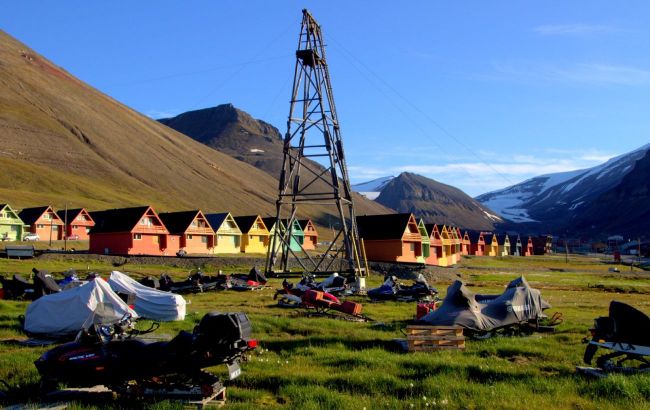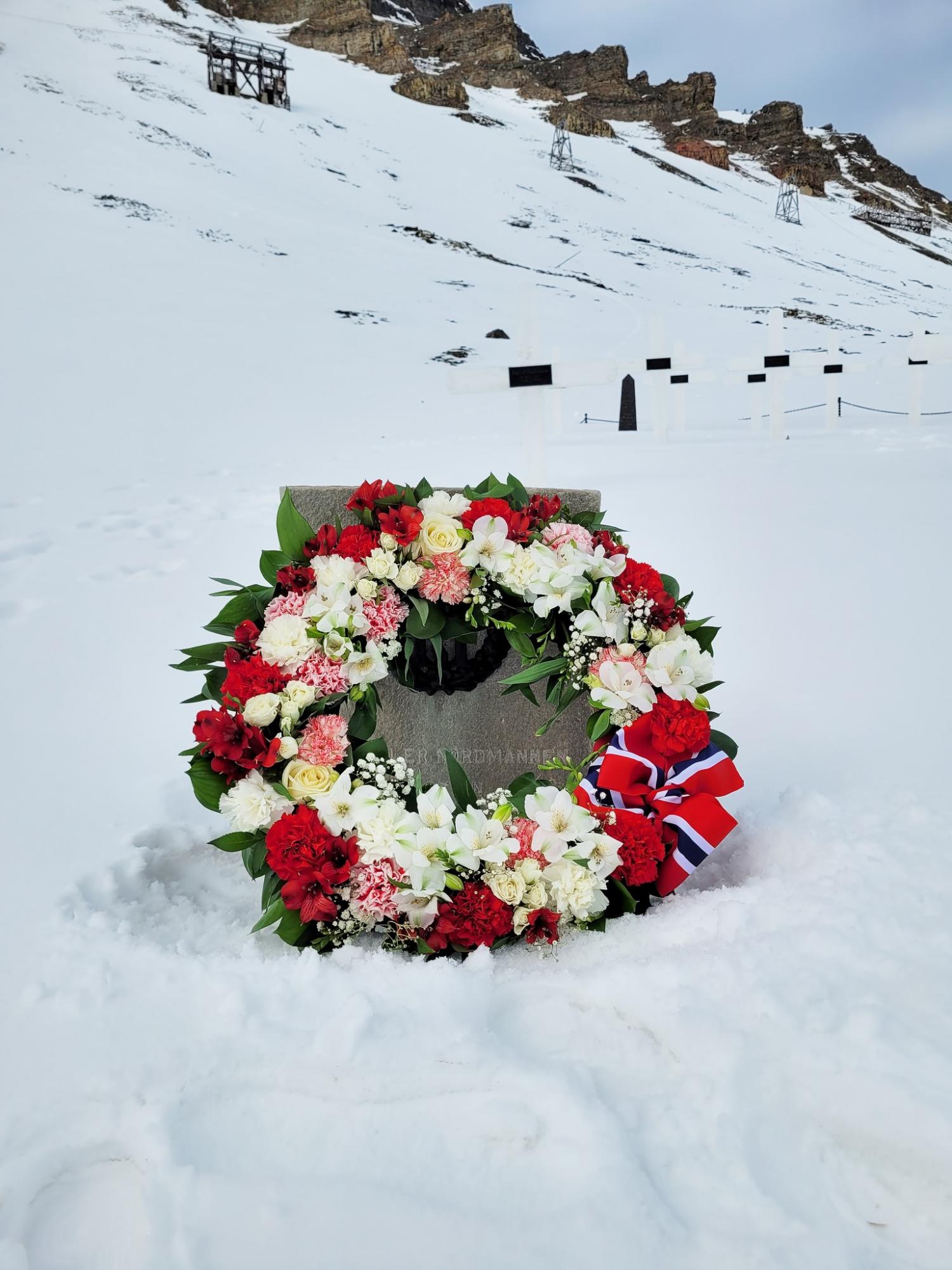This place banned death - Reason goes back to deadly ancient virus
 The city where dying is a crime (photo: Facebook/Longyearbyen Lokalstyre/Jorunn Tove Høiland)
The city where dying is a crime (photo: Facebook/Longyearbyen Lokalstyre/Jorunn Tove Høiland)
There are many unusual laws and regulations in the world, but one of them stands out for its uniqueness and is dictated by harsh natural conditions. On the Norwegian archipelago of Svalbard, in the town of Longyearbyen, it is officially forbidden to die. This prohibition is not a whim or oddity but a vital necessity based on scientific and sanitary considerations. Where on Earth is death forbidden?
Why is dying forbidden in Longyearbyen?
The reason for this unusual rule lies in the Arctic climate where Longyearbyen is located. The town is in a permafrost zone, which means the ground remains frozen year-round. This means serious problems for traditional burials.
"Due to the permafrost, bodies buried in the ground do not decompose. This not only creates a problem with limited space at the cemetery but also poses a potential health threat to the population," explains Arctic biology expert Dr. Elias Andersen.
The most striking example of this threat is the history of Longyearbyen's cemetery. The last burials took place there in the 1950s. However, the most well-known case confirming the correctness of this approach involved the bodies of people who died during the Spanish flu pandemic in October 1918. These were several young miners, aged 18 to 29, who had come to the archipelago in search of work.
Due to Norway's established practice at the time of deep burials (around two meters) and the severe climate, the bodies were placed deep in the frozen ground. Locals, frightened by the spread of disease, wanted to be sure the bodies would not "resurface" and become a source of contagion.
Nearly 80 years later, in 1998, a group of international scientists led by medical geographer Dr. Kirsty Duncan launched an ambitious project. Their goal was to study the remains of Spanish flu victims buried in the permafrost because they hoped to find intact virus samples.
The idea was that the low temperatures might have preserved the virus, allowing scientists to study its genetic structure before the mutations it underwent over the following decades.
Researchers carefully exhumed the bodies of seven miners. They worked under a special inflatable tent to ensure safety and privacy, using specialized equipment for working with frozen soil. Even though some coffins were found closer to the surface than expected and not entirely within the permafrost zone, samples were still collected.
 The burial ban also has a scientific basis (photo: Facebook/Longyearbyen Lokalstyre/Jorunn Tove Høiland)
The burial ban also has a scientific basis (photo: Facebook/Longyearbyen Lokalstyre/Jorunn Tove Høiland)
Tissue analysis showed that the Spanish flu virus was indeed preserved in an intact state. This discovery was a real breakthrough in understanding virology and pandemics. It allowed scientists to reconstruct the genome of the 1918 virus, which is invaluable for developing new vaccines and strategies to combat future flu pandemics.
At the same time, the study not only expanded scientific knowledge but also became a final confirmation of the correctness of Longyearbyen’s decision to ban burials in its cemetery. The risk of releasing ancient, potentially dangerous pathogens from undecomposed bodies was too high to ignore.
Rules of life and death
In light of these circumstances, Longyearbyen authorities made a decision that remains in effect today.
If a person becomes seriously ill or is approaching death, they are immediately transported by plane to mainland Norway. There they receive medical care and, in case of death, are buried.
The local cemetery has not been used for new burials for a long time. Even urns with cremated remains are not interred here due to the risk that wild animals may dig them up.
Interestingly, in addition to the ban on dying, there are also informal restrictions on childbirth. Women are advised to leave Longyearbyen a few weeks before giving birth to do so on the mainland. This is due to limited medical resources and harsh living conditions in the archipelago.
Longyearbyen is not alone in its "ban on death"
Although Longyearbyen is the most well-known example, similar "death bans" sometimes appeared in other places, albeit for different reasons.
For example, Japan's Itsukushima Island is famous for its grand Itsukushima Shrine, which appears to float in the water at high tide. This island is one of the holiest places in Shintoism (the traditional Japanese religion).
Shintoism places great importance on purity (kegare) and pollution (hare). Death, like birth, is considered a source of ritual impurity. To preserve the absolute purity of Itsukushima and its shrine, there has long been a strict custom that prohibits any death or birth on the island.
Thus, pregnant women were sent to the mainland to give birth. People close to death also had to leave the island. Even if someone died unexpectedly on Itsukushima, the body was immediately removed, and the area underwent purification. There were and still are no cemeteries on the island.
Unlike Japan's sacred rationale, the "bans on death" in some towns in France and Italy were purely pragmatic, and sometimes even comical. They were not age-old traditions but rather temporary or symbolic legal acts issued by mayors.
Most often, such "bans" arose when local cemeteries were full and there was no space for new burials. Facing this problem and a lack of funding or permits for expansion, mayors resorted to extravagant measures to draw attention or to encourage citizens to cremate their dead.
Sometimes the bans were a reaction to slow bureaucratic processes delaying permits for the construction of new burial sites.
Most interestingly, some mayors used "bans on death" as a form of protest to mock the central government or local authorities for not providing the necessary resources.
For example, in 2000, the mayor of Le Lavandou on the French Riviera issued a decree that "prohibits dying" within the municipality, stating that there was "no more space" in the local cemetery. The decree was symbolic, of course, but drew significant attention to the issue.
In 2012, the mayor of the Italian municipality of Castiglione del Lago also issued a "ban on death" due to the complete lack of cemetery space.
However, Longyearbyen's case remains unique due to its permanent nature and justification based purely on practical considerations, reflecting humanity's struggle with extreme natural conditions. This town is a living example of how nature can dictate its own rules even in the most fundamental aspects of human life.
You may be interested in:
- 10 incredible facts about Portugal you won't find in any guidebook
- Why it is strictly forbidden to swim in Lake Synevyr
- Which country has fewer than 800 inhabitants
Sources: Norway Today, The Guardian, National Geographic, Wikipedia

